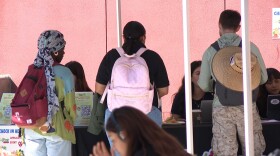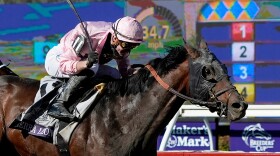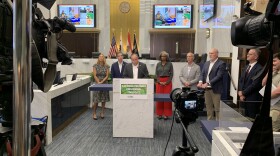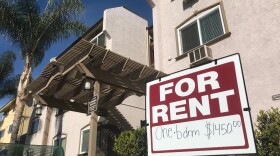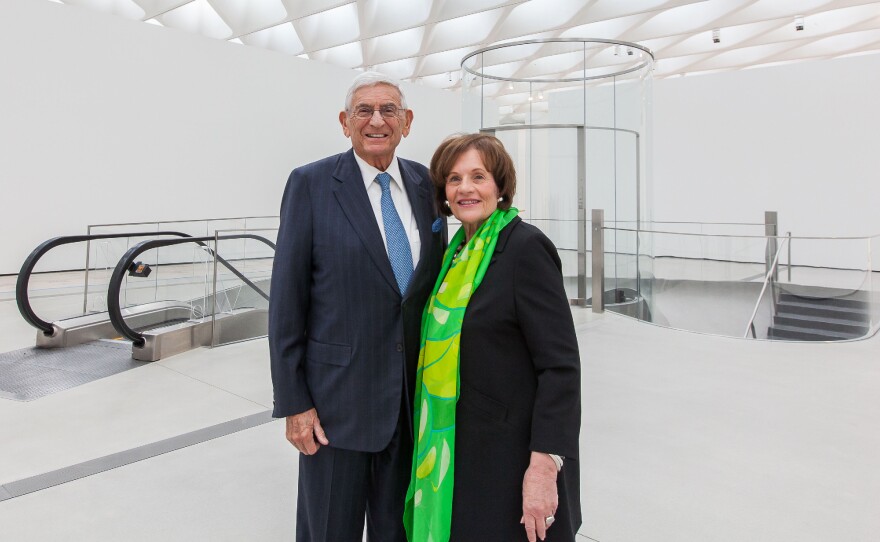

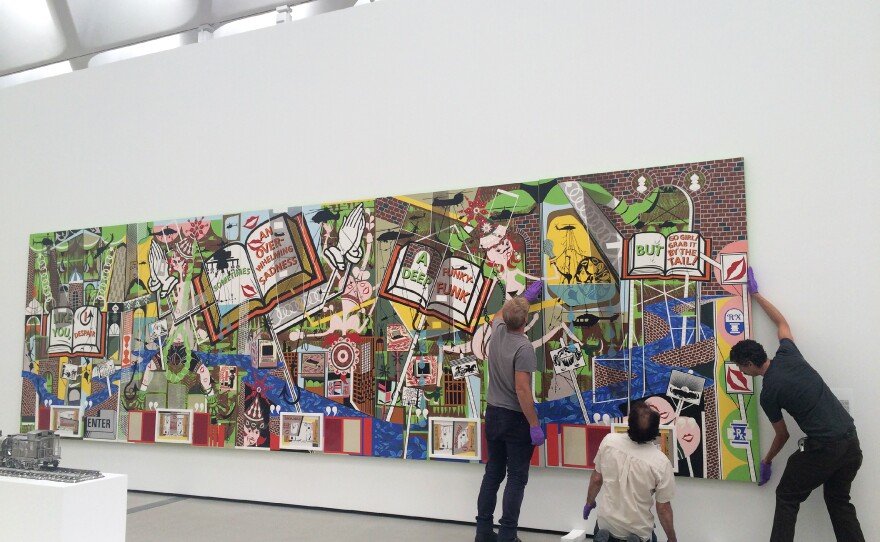
Los Angeles is getting a new contemporary art museum, courtesy of billionaire philanthropist Eli Broad and his wife Edythe. Their free museum opens Sunday.
Surrounded by the Walt Disney Concert Hall, the Music Center and the Museum of Contemporary Art, The Broad is already an architectural landmark, with its honeycomb-like exoskeleton.
"This shell of sorts, this light filter, this amazing sculptural structure ... enrobes the museum," says Joanne Heyler, the museum's director and chief curator.
Traveling up through the middle of the building in the round, glass elevator you can peek inside what's known as "the vault"-- an entire floor storing the Broads' collection of more than 2,000 paintings, photos and sculptures.
On the top floor, diffused natural light pours in through skylights. There's work here from Andy Warhol, Jeff Koons, Roy Lichtenstein, Robert Rauschenberg, Ed Ruscha, Keith Haring, Cindy Sherman and Chris Burden. There's an entire room for Takashi Murakami. The collection includes a lot of L.A. artists, Heyler says.
Despite the insane art market, the Broads have no trouble purchasing the art they like. "It's simple," says Heyler. "If there's a work of interest, we acquire it. There's no committee process. There isn't a long, drawn-out bureaucratic process to follow."
From his office in L.A.'s Century City neighborhood, Eli Broad, 82, can look out over the many of the cultural institutions he's helped fund — the Los Angeles County Museum of Art, the Museum of Contemporary Art, and now, his museum.
"We want this to be a gift to the city of Los Angeles," he says. "We've been collectors now going on 45 years."
Broad says building his museum took longer and cost more than he thought it would. But he wanted a permanent home for his collection so people could see it and enjoy it.
"We wanted to share it with the broadest possible public," he says. "That's why we have free admission."
Forbes estimates Eli Broad is worth $7.4 billion. He made his fortune building suburban tract homes, and also running an insurance company. He and his wife bought their first artwork — a van Gogh drawing — and then quickly switched to collecting contemporary art. He says they liked buying works with social or political meaning. And along the way, they've gotten to know the artists personally.
He remembers artist Jean-Michel Basquiat, who died of a drug overdose at age 27, smoking pot in their powder room. He says the first time he saw Basquiat's work in New York he was drawn to it "because it wasn't just graffiti, it was very thoughtful," Broad says.
He recalls seeing Cindy Sherman's work for the first time in a gallery on Mercer Street in New York. "We followed her career and have 120 of her works," he says.
Painter Lari Pittman says considering the caliber and number of artists who live in L.A., he wishes the city had more museums. Ten of his paintings are in the Broads' permanent collection and he's honored to have his work in this new museum.
"The Broads have really decided to make something private public ... for free," he says. "That is a huge social gesture. You know, I know a lot of wealthy people. They do nothing."
Artist Barbara Kruger also says she welcomes the new museum, which showcases several of her works. "The Broads are truly collectors," she says. "They are not speculators. And they tend to collect works that many would find challenging and engaging on a visual and intellectual level. And I'm sure this will continue as artists continue to make critical and resistant works."
The first floor of the Broad showcases newer artists — video installations, a mirrored "infinity" room, a chilling drawing of the police in Ferguson, Mo. The editor and publisher of Artillery Magazine, Tulsa Kinney, says she's glad Broad continues to collect.
"I just hope he really broadens his eye towards not just white male artists," Kinney says, "Come on, look, we're in Los Angeles."
There's no lack of excitement for the new museum. Even before the doors open, nearly 100,000 art lovers have already booked their free tickets.
Copyright 2015 NPR. To see more, visit http://www.npr.org/.



